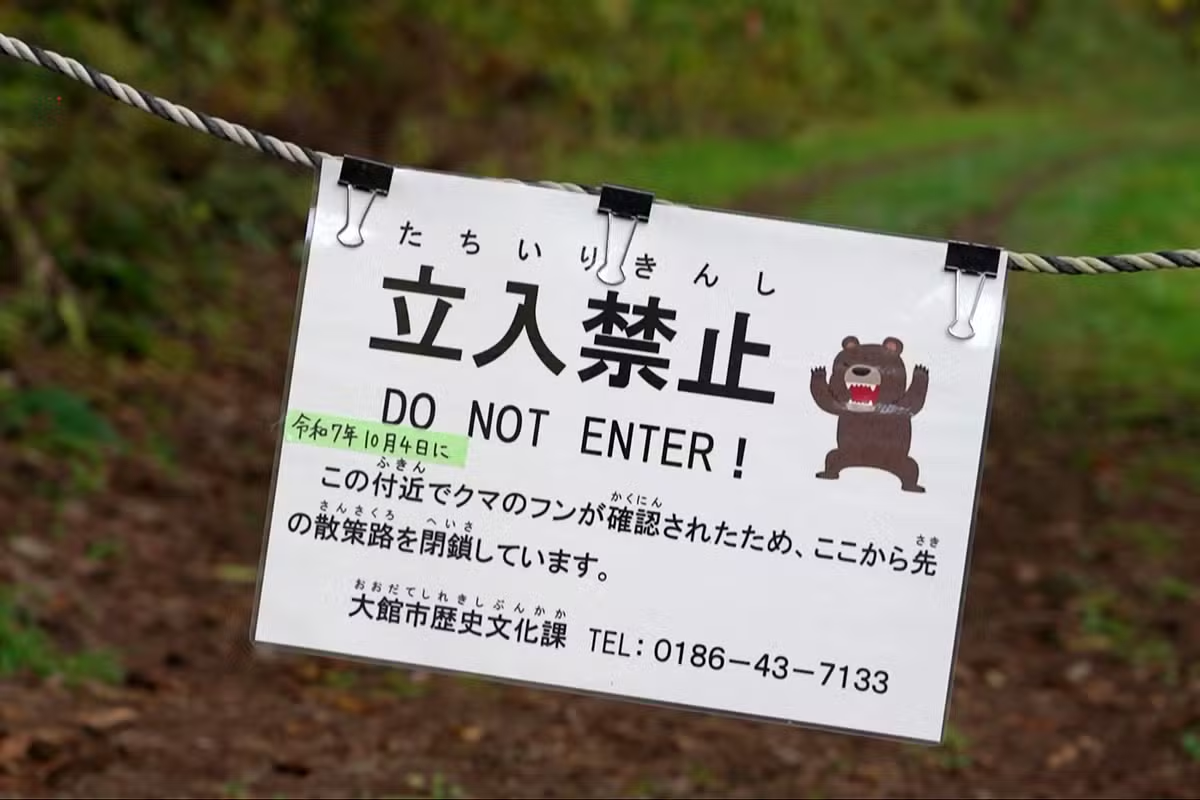
Keiji Minatoya thought he had met his end when a bear knocked him to the ground and bit him in the face in his garage in northern Japan, but fatal encounters with bears have increased rapidly in recent months.
- Check it out: Small tsunamis have been recorded in Japan after offshore earthquakes. understand
He survived an attack that occurred in Akita Prefecture in 2023. But since April, a record 13 people have died at the hands of these mammals, and dozens of terrified Japanese people have reported seeing them breaking into their homes, wandering through schools and breaking into supermarkets.
The government is trying to deal with this phenomenon, including by sending soldiers. Scientists believe the increased bear population is due to food shortages this year, especially acorns. Regional depopulation also contributed.
Minatoya, a 68-year-old pastry chef, remembers struggling to protect her head until she finally took shelter in the kitchen. “I thought, ‘I’m going to die like this,'” he said.
The number of deaths this year, which started in April, is already double the previous record set two years ago.
Attacks by brown and black bears, which can weigh up to 500 kg and run faster than humans, primarily affect the northern part of the country.
Among the latest victims is a 67-year-old man who was found decapitated in October in Iwate Prefecture, near Akita. The body of another man in his 60s, who was believed to have been attacked while cleaning an outbuilding at an isolated spa, was found in nearby woodland.
In addition, more than 100 people were injured from April to September, according to official data.
According to the government, the number of brown bears has doubled in 30 years to 12,000, and the Asian black bear population has reached 42,000 on Honshu.
Naoki Onishi, a researcher at the Forestry and Forest Products Research Institute, explains, “The population size exceeds the mountain’s carrying capacity.”
Rising temperatures due to climate change have led to an overabundance of acorns, but production fluctuates widely from year to year. Both 2025 and 2023, the year of the Minatoya attack, were relatively low.
As a result, bears often descend on cities in search of food with their cubs, said Shinsuke Koike, a professor at Tokyo University of Agriculture and Technology.
The decline in Japan’s rural population due to declining birth rates and the outflow of young people to cities is also blurring the boundaries of habitat.
The fear is also evident in villages, where residents hang bells on backpacks to scare away bears and discuss attacks in bars. Warning signs are everywhere.
“It seems like bears are coming down from the mountains more often,” warns Sho Matsuhashi, 28, a “matagi”, or traditional hunter, from Tohoku. “We hear about attacks almost every day.”
For Onishi, “mass culling” of bears is the only effective solution to guaranteeing the safety of residents. But resources are scarce, and the number of hunters has halved since 1980, reaching 220,000 in 2020.
More than 9,000 bears were killed between 2023 and 2024, and another 4,200 were killed between April and September last year. More than 1,000 animals have been killed in Akita prefecture this year already, and authorities have requested help from the military to transport traps, hunters and captured animals.
Additionally, rules on the use of weapons have been relaxed, allowing riot police to shoot and kill animals. Winter is a relief. As bears hibernate, infestations are reduced, but the threat remains.
“It’s like living in a bear safari,” confesses Hajime Nakae, a professor of medicine at Akita University Hospital who has been treating bear injuries for 30 years. “We are witnessing a catastrophe.”



